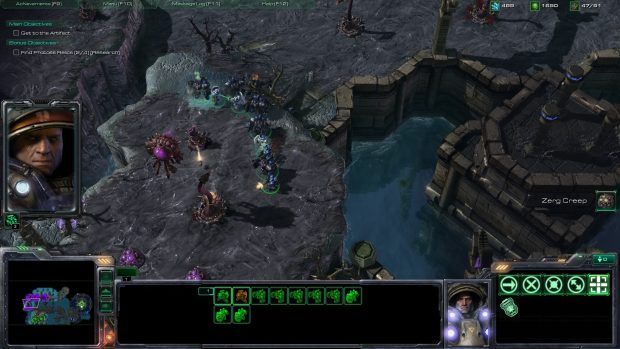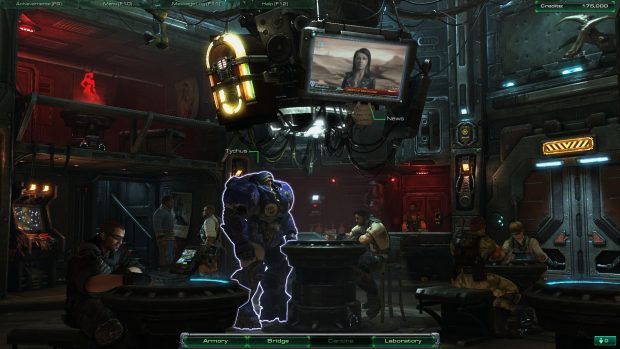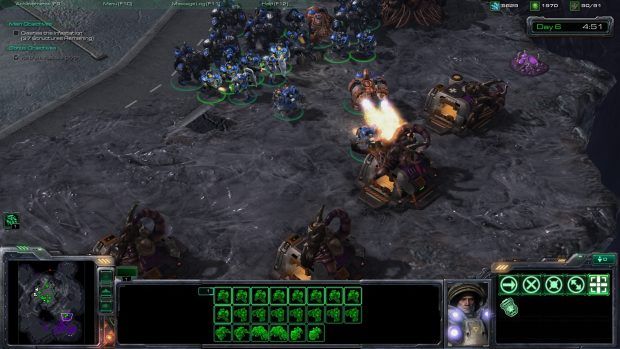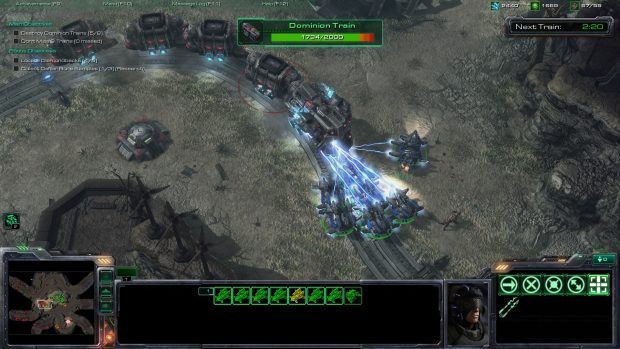It's almost easier to talk about the year's biggest PC title by talking about what it isn't. It's not an attempt to redefine a genre, or even redefine a franchise. It's not a back-to-basics exercise in the vein of the last few chapters of Command and Conquer, nor is it an attempt to merge the RTS with other genres, in the way that Dawn of War II attempted last year.
Our quick take
It seems odd to heap praise upon a sequel because it looks and feels so much like the original, but that's exactly what makes StarCraft II so great. In terms of visuals, presentation and cinematic appeal it's very much a 2010 game, but with core gameplay that worked like a dream back in 1998, and still works brilliantly 12 years later. Fast-paced, entertaining and packed with tactical complexity, this might not be the most revolutionary RTS, but it's the best to hit the streets in years.
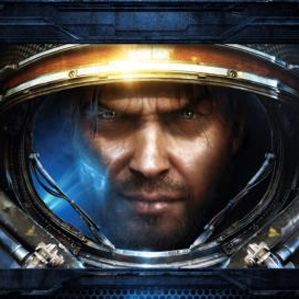
StarCraft II - 4.5 / 5
| FOR | AGAINST |
|---|---|
|
|
There's no grand strategic meta-game, as in the Total War series, and the innovations introduced by Company of Heroes - cover, shelter, facing, etc - are conspicuous by their absence. It's as if Blizzard has spent the last decade ignoring all trends in the RTS genre, concentrating on just one thing: making the best StarCraft game it can.
If so, it's worked. StarCraft II is very much StarCraft, tweaked, polished, reskinned and ready for life in 2010. Those of us who played and loved the original back in the day will find that this new instalment plays in virtually the same way. Within a few hours, you'll be building bases, harvesting minerals and gas, adding defensive structures, creating and upgrading your offensive units and sending them out on the attack as if nothing has changed since 1998, bar the graphics.
You'll take the drip-feed of new units in your stride, fit them into your strategies and work out new ideas, but there are no massive new game mechanics to learn, and none of the old ones have been jettisoned. No new combat systems have been added, and no new races have been introduced to throw you off balance. StarCraft II is a game that existing fans will be able to play practically by muscle memory.
This lack of progress might be thought of as a weakness, but StarCraft II resists any such complaint. Blizzard spent years honing the gameplay of the original and the sequel has clearly been tweaked, balanced and polished until it's pretty much faultless. There are still some frustrations with the AI, usually to do with a failure to respond to attacks on nearby units, but nothing beyond what you'd expect from any comparable game, and the design and balancing of the units between the game's three species - Terran, Zerg, and Protoss - is both sophisticated and exemplary.
With so many units to create and so many upgrades to unlock for them, learning which unit trumps which enemy and why can be a challenge, but there's never a sense that an enemy is just unbeatable. You'll face defeat in both campaign and multiplayer games, then realise that there were mistakes you made or alternative strategies you could have tried. This is the mark of a classic RTS.
But there's more to StarCraft II than polished, old-school gameplay. StarCraft was one of the first titles to put story at the heart of an RTS, and the sequel takes this approach to a level that only a few rivals - say Company of Heroes or Dawn of War - have done before.
Much has been made of the single-player campaign's framing structure, where your protagonist, ex-Marshall Jim Raynor, can flick from cantina to bridge to research lab to armoury in a Terran battlecruiser, consulting allies and choosing persistent upgrades to research before deciding upon the next mission (the campaign is no longer a totally linear experience). It's well done, with the sort of dialogue, detail and animation we've come to expect from Blizzard, but not a massive part of the StarCraft II experience as a whole.
Its main effects are more related to long-term gameplay than narrative. The introduction of mercenaries - special units which you can hire and then deploy once per mission - adds a new twist to the usual build and research mechanics, as does the introduction of persistent upgrades. Basically, you earn research points through secondary objectives, and these can then be used to advance your units or defensive structures via the application of Zerg or Protoss technology. All of this is good, but does it turn StarCraft II into the Mass Effect of RTS games? Probably not.
What's more impressive is the way each level turns into a mini-narrative of its own. Sure, you'll nearly always find yourself doing the traditional harvesting, base-building and defending that's part and parcel of the genre, but as each mission develops, new twists arrive, new objectives occur, and you'll find yourself drawn further and further into StarCraft II's over-arching plot.
Prepare to be caught off-guard. You'll find yourself in situations where you're racing out to tackle Zerg-infested buildings by day, then retreating rapidly back to base at nightfall, to defend the base against aggressive, infected zombie Terrans. You'll find yourself in a bidding war for a gang of mercenaries, frantically trying to stockpile minerals so that you can bring them in on your side, and not lose the battle to a treacherous foe. StarCraft II isn't merely sticking close to its roots; it's finding ways to freshen up the core gameplay without doing anything to break it. The mission design keeps you constantly on your toes.
Of course, it's in the multiplayer mode that the game's long-term future lies. The key thing here for Blizzard has obviously been to find ways of making a game that a hardcore fanbase has been playing for over a decade accessible to a new audience, and ensuring that everybody has a good time. As a result, the game begins slowly, hitting you with a series of practice matches in which you can build up your skills at a more relaxed pace, followed by a set of five placing matches by which the game can determine exactly how good (or wretched) a StarCraft player you are. This initial ranking ensures that you're matched against players at the right level, after which the normal matchmaking system takes over.
Frankly, those of us who haven't spent the last 10 years playing StarCraft will be in for a humiliating time here. Our first of the five placing matches was over within a miserable 8 minutes, and we can't say we achieved any great victories immediately afterwards. Once you're over the hump and playing similarly clueless players, however, the depths of the game reveal themselves, and you'll have a chance to find your feet. Since StarCraft, a mass of other games have taken the approach of offering multiple races with different units and play styles, but few have managed it so effectively. Take an approach that works for the Terrans and use it with the Protoss or Zerg, and you'll lose every time, guaranteed.
Being picky, a little too much rests on having an optimal early build strategy, and all three races are vulnerable to a quick and dirty rush, but then learning how to counter this is pretty much StarCraft 101. Our tip would be to enjoy the practice matches, play a few single-player skirmishes for each side to get back into the game, and only then consider battling it out online in earnest. Some of these guys have had an awful lot of practice, so don't get too discouraged if it all doesn't gel at once.
Technically, StarCraft II doesn't appear to do anything that establishes it as a new benchmark for the genre, but it has to be said that the game looks great, with every building, landscape and unit lavished with real artistry and attention to detail. It's great to see familiar units like the Terran Firebat or Zerg Ultralisk updated for an HD era. You can always zoom in for a better look, but by default StarCraft II sticks to a view which approximates that of the original - again, the emphasis is on retaining the established look and feel rather than adding visual flourishes for the sake of it.
Are there disappointments? Just one, and to be fair we all knew it was coming. There's no question that the Terran campaign is long enough and engaging enough to carry the game, but the decision to move the Zerg and Protoss campaigns to separate expansion packs is still bad news for those of us who, say, prefer the fiendish creepy-crawly aliens, and means that those wanting to play non-Terran forces in multiplayer will have to do without a tutorial bar some fun challenge missions, which do at least give you some idea of which unit to use against which. It also leaves a few holes in the plot to be filled later. As a result, Wings of Liberty doesn't quite feel like the full StarCraft experience, even if nobody can realistically complain about a lack of content.
To recap
Fast-paced, entertaining and packed with tactical complexity, this might not be the most revolutionary RTS, but it's the best to hit the streets in years

